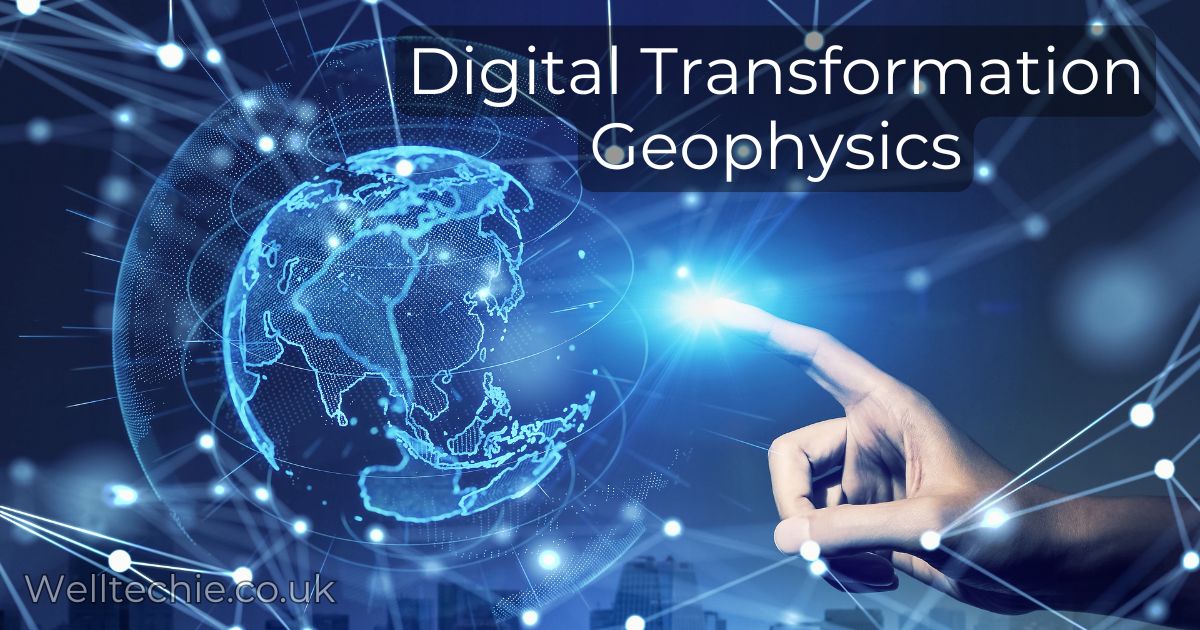Digital Transformation Geophysics is rapidly revolutionizing how we study the Earth’s processes. As this transformation unfolds, it brings new technologies that significantly enhance both efficiency and precision. Consequently, with digital tools at their disposal, geophysicists are entering an exciting new era that promises deeper insights and advanced capabilities.
What is Digital Transformation?
Digital transformation involves integrating advanced technology into every aspect of a business or field. Essentially, it reshapes how operations are conducted and how value is delivered. Moreover, the goal is to use digital tools and data to improve processes and boost productivity. Over time, this transformation has impacted industries like retail, finance, and now geophysics.
In the case of geophysics, digital transformation means utilizing cutting-edge tools to enhance data collection and analysis. Traditionally, geophysical methods often relied on manual processes, which were both time-consuming and limited in scope. However, by adopting digital methods, geophysicists can now work far more efficiently. As a result, they can achieve a deeper understanding of Earth’s structure and natural processes.
Overview of Geophysics
Geophysics, at its core, is the study of Earth’s structure through physical measurements. It explores phenomena such as gravity, magnetic fields, and seismic waves. These measurements are essential in helping us understand what lies beneath Earth’s surface. Furthermore, geophysics plays a key role in resource exploration, environmental monitoring, and disaster prediction.
Historically, geophysicists relied on techniques like seismic surveys and magnetic measurements. While these methods have produced valuable insights, the data collection and analysis processes were often complex and time-consuming. Digital Transformation Geophysics aims to improve these traditional methods by introducing faster, more automated processes, ultimately making data collection more precise and manageable.
The Role of Digital Transformation Geophysics
Digital transformation is fundamentally changing how geophysicists collect and interpret data. Technologies like artificial intelligence (AI), the Internet of Things (IoT), and big data are playing pivotal roles. Together, these tools offer new ways to improve both accuracy and efficiency in the field.
For example, AI allows geophysicists to analyze complex data sets much faster than before. In fact, AI can identify patterns and anomalies that are often missed by traditional methods. This is especially useful in seismic data analysis, where AI can help predict earthquake activity, providing critical insights. Consequently, AI’s role in geophysics is growing rapidly.
Emerging Technologies in Geophysics
Artificial intelligence and machine learning are at the forefront of the Digital Transformation Geophysics. These technologies significantly enhance how data is processed and interpreted. Specifically, AI algorithms analyze large volumes of data, identifying patterns that humans may overlook. Additionally, machine learning models improve predictive capabilities, which is particularly valuable in forecasting earthquakes or volcanic eruptions.
Moreover, the Internet of Things (IoT) is transforming geophysics in real-time. Sensors placed in remote locations can now collect real-time data on seismic activities, temperature fluctuations, and more. This data allows for continuous monitoring and immediate analysis, providing geophysicists with critical insights without delay.
In addition, big data analytics plays a crucial role in this transformation. Since geophysics generates massive data sets, traditional methods struggle to keep up. Fortunately, big data tools can handle large volumes of information, allowing for more detailed analysis. This, in turn, leads to more informed decision-making in areas such as resource exploration and environmental monitoring.
Digital Tools and Platforms
The Digital Transformation Geophysics heavily relies on advanced software tools. These tools assist geophysicists in analyzing seismic data, magnetic fields, and gravity measurements more effectively. Software platforms, furthermore, offer powerful data visualization features, improving how geophysicists interpret results and draw conclusions.
Additionally, cloud computing is playing a major role in this transformation. It provides scalable storage for large data sets, making data more accessible. With cloud computing, teams can collaborate more easily and share results quickly. Furthermore, it reduces the need for expensive hardware, which has traditionally been a common barrier for many geophysical projects.
Also Read: Petals of Fear David Aminov
Challenges and Considerations
Despite the benefits, one of the key challenges of Digital Transformation Geophysics is data security. As geophysical data moves to the cloud, ensuring its protection becomes crucial. Unauthorized access to sensitive data can lead to serious consequences. Therefore, companies must adopt strong security measures such as encryption and multi-factor authentication to safeguard their data.
Another challenge is the integration of digital tools with traditional methods. Some geophysicists, understandably, may be hesitant to change their established practices. They might also lack familiarity with digital tools. To overcome this resistance, it is essential to provide proper training and demonstrate the benefits clearly. Once the advantages are evident, adoption becomes much easier.
Case Studies of Digital Transformation Geophysics
Several companies have successfully implemented digital transformation in their geophysical work. For instance, the use of AI in seismic data analysis has significantly improved the accuracy of earthquake predictions. Consequently, this leads to better preparedness for natural disasters. IoT devices, moreover, have transformed how volcanic activity is monitored. Real-time data from these devices has enhanced early warning systems, which are critical in high-risk areas.
Ongoing projects continue to push the boundaries of Digital Transformation Geophysics. For example, remote sensing technologies are being developed for more accurate data collection. At the same time, machine learning models are being refined to make more accurate predictions. Altogether, these innovations have a significant impact on how we understand and manage Earth’s resources.
The Future Outlook
The future of Digital Transformation Geophysics is filled with exciting opportunities. In the coming years, AI will likely continue to improve, allowing for even more accurate data analysis. New sensor technologies will make data collection faster and more precise. As a result, these advancements will enable geophysicists to gain even deeper insights into Earth’s processes.
Furthermore, the job market will also see changes. As digital transformation continues, new skills will become necessary. Geophysicists who can work with digital tools and analyze complex data sets will be in high demand. Professionals in the field, therefore, must stay updated with the latest technological advancements to remain competitive.
Conclusion
In summary, digital transformation geophysics is reshaping the field in profound ways. It has significantly improved how geophysicists collect, analyze, and interpret data. The integration of AI, IoT, and big data is leading to more accurate and efficient results. These advancements are not only enhancing our understanding of Earth’s processes but also helping solve complex geophysical challenges. As digital tools continue to evolve, the future of digital transformation geophysics looks brighter than ever before.
FAQs
What are the main benefits of Digital Transformation Geophysics?
Digital Transformation Geophysics enhances data accuracy, predictive capabilities, and real-time monitoring. Additionally, it streamlines data analysis, improving the speed and precision of geophysical assessments. New technologies, such as AI, help identify patterns faster than traditional methods.
How can geophysical companies prepare for digital transformation?
Geophysical companies can prepare by investing in new technologies and providing training to staff. Furthermore, they should focus on adopting AI, IoT, and big data tools. Implementing strong data security measures is also critical to protect sensitive information.
What technologies should be prioritized for future geophysical projects?
The focus should be on AI for advanced data analysis, IoT for real-time monitoring, and big data for managing large data sets. Together, these technologies will provide deeper insights and significantly improve geophysical assessments.










